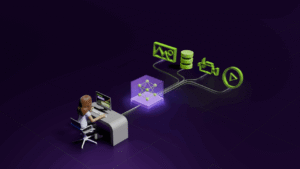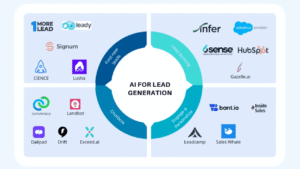If you’re considering a Grok AI deployment for your business, you already know there are potential challenges to overcome. Grok has established itself as a powerful AI assistant for the enterprise, blending robust processing and reasoning capabilities with a distinctive personality.
Used correctly, Grok can be an invaluable asset for marketing, sales, and customer service teams. However, ensuring seamless integration with your existing business tools and mitigating risks such as AI bias, discrimination, and hallucinations remains essential.
Even leveraging Grok’s special features—like real-time access to X data—introduces potential risks. So, how can you deploy Grok safely? Here’s everything you need to know.
Grok AI Deployment Best Practices for Businesses
Developing a comprehensive plan for deploying Grok AI is not just about maximizing your return on investment—it’s also about avoiding pitfalls that could damage your reputation or expose you to compliance issues. Follow these best practice tips to unlock the full value of Grok while minimizing risks.
Step 1: Identify Clear Use Cases
The first step in a successful Grok AI deployment strategy is to pinpoint the right use cases for your intelligent assistant. Like many generative AI tools, Grok supports a variety of applications. The latest model, Grok-3, excels in assisting companies with math, science, and programming tasks, and it’s particularly adept at data analysis for text-based content.
Grok can also be a powerful tool for marketing teams. With its ability to conduct deep web research, access real-time data from X, and analyze social media trends and customer sentiment, it can generate highly engaging content—even producing hyper-realistic images with its Aurora model. However, it’s crucial to understand both Grok’s strengths and its limitations. While its personality-driven content can be engaging, it may not suit brands that prefer a more straightforward tone. Additionally, Grok’s heavy reliance on social media data increases its risk of hallucination, making thorough fact-checking a necessity before publishing any content.
Step 2: Choose Your Grok AI Deployment Method
Next, consider how you will access Grok AI. Older versions of Grok are available free to all X users, but to utilize advanced capabilities like those in Grok-3, you’ll need an X Premium or X Premium+ subscription—with plans starting at $8 and $40 per month respectively. The Premium+ plan offers higher usage limits, along with DeepSearch and Think features, and even early access to new functionalities.
Alternatively, if you want to embed Grok’s features into your existing applications, you can opt for an API subscription. Pricing starts at $2 per 1 million input tokens or $10 per 1 million output tokens for Grok-2. API integrations offer greater customization for your specific use cases and can seamlessly connect Grok with your CRM, ERP, and other business tools. Keep in mind that long-term API usage may incur additional costs, and you’ll need sufficient technical resources to manage these integrations safely.
Step 3: Gather Technical Experts and Resources
If your deployment involves APIs, securing the right technical expertise is essential. Deploying Grok isn’t as simple as generating an API key; it requires experienced programmers proficient in languages such as Python and Java, and a solid strategy for securing and managing API connections.
Collaborate with professionals experienced in cloud platforms like AWS, GCP, and Azure—since Grok typically operates within these environments. Determine which integrations are critical to your operations; for example, marketing, sales, and customer service tasks will likely require tight integration with your CRM and ERP systems. Additionally, consider training Grok with your proprietary data and establishing monitoring mechanisms to mitigate compliance risks. Ensure your team is well-trained on system usage and API management.
Step 4: Develop Clear Security and Usage Policies
Establishing robust usage and security policies is crucial when deploying a new AI system, particularly one like Grok that does not include the same built-in safety mechanisms as competitors such as Microsoft Copilot or Anthropic’s Claude. Grok’s capabilities—including generating deepfake images via its Aurora feature and handling sensitive customer data—raise significant concerns.
Before implementation, assess your compliance requirements thoroughly. Define the data protection and privacy measures needed and ensure all team members understand safe AI usage. Implement policies that prohibit the generation of dangerous content or deepfakes, and explore options to “opt-out” of unnecessary data sharing wherever possible.
Step 5: Train Your Teams
Training is especially critical when deploying Grok AI, given its unique characteristics and the absence of strict safety defaults found in some other systems. Educate your team not only on security protocols but also on best practices for using Grok effectively. Ensure that staff understand how to avoid exposing sensitive data and how to validate the AI’s responses accurately. Provide guidelines to help them identify and correct instances of bias, hallucinations, or unsafe outputs, and regularly update training resources to keep pace with evolving features and models.
Step 6: Constant Optimization After Deployment
Maximizing the benefits of your Grok AI solution requires ongoing optimization. Continuously monitor the model’s performance based on the specific use cases you’ve defined. For example, if Grok is deployed for marketing, track metrics such as ROI, conversion rates, and customer engagement. For customer service, monitor response times, satisfaction rates, and overall productivity.
As your business grows, explore additional opportunities to integrate Grok across various functions—whether that means expanding its use in sales, coding, or product development. Regularly update your models with new data, embrace emerging features, and remain vigilant for signs of bias or potential security issues.
Optimizing Your Grok AI Deployment
Investing in a robust Grok AI deployment strategy can elevate your marketing, sales, customer service, and even product development efforts. Despite its impressive capabilities, Grok carries inherent risks—such as hallucinations and security vulnerabilities—that must be managed through careful training, clear policies, and constant oversight.
By following these best practices, you can ensure a safe, efficient, and effective deployment of Grok AI. This guide equips you with the essential steps to not only unlock the full potential of Grok but also to maintain robust security and compliance standards throughout your enterprise.








